 W
WGarcía Álvarez de Toledo y Osorio, 4th Marquess of Villafranca del Bierzo, was a Spanish general and politician.
 W
WEduardo Barrón was a Spanish aeronautical engineer and military pilot who led the design department at Talleres Loring from 1923 to 1930.
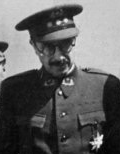 W
WJuan Luis Beigbeder y Atienza was a Spanish military and political leader who held the positions of Chief of Indigenous Affairs and later High Commissioner in the Protectorate of Morocco from 1937 to 1939 then, just after the Spanish Civil War, served as Minister of Foreign Affairs between 12 August 1939 and 16 October 1940, during the rule of Francisco Franco.
 W
WDon Emilio Bonelli y Hernando was a Spanish military officer, author, explorer, colonial administrator and Africanist.
 W
WJosé Cardero was a Spanish draughtsman and artist. He is most remembered for his work on the expedition of Alessandro Malaspina and the related expedition of Dionisio Alcalá Galiano. During the Galiano voyage Cordero Channel was named in his honor. Other places in British Columbia were later named in his honor as well, including Dibuxante Point, "dibuxante" being Spanish for "draughtsman".
 W
WGonzalo Casco (1533–c.1588) was a Spanish military leader and conquistador of Paraguay.
 W
WDiego de Roxas or Rojas (1500–1543) was a Spanish soldier, explorer, and conquistador of Central America and South America.
 W
WRafael Díez de la Cortina y Olaeta, 1st Count of Olaeta (1859–1939) was a Spanish-American linguist. Globally he is recognized as the first person to introduce sound recording into the teaching of foreign languages, for which he started a related business in the 1890s. In Spain he is also known as a Carlist political activist and soldier.
 W
WEmmanuel Ignatius of Nassau-Siegen, was a Fieldmarshal of the Spanish and Austrian Army, and Regent of the Principality of Nassau-Siegen in 1727.
 W
WLuis García Ruiz was an army general who took part in the military uprising against the Second Republic in July 1936.
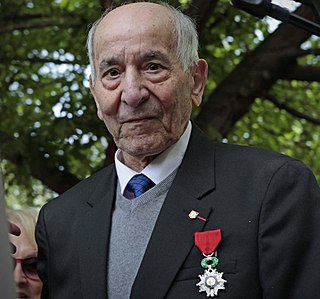 W
WRafael Gómez Nieto was a Spanish soldier and veteran of the Spanish Civil War and World War II.
 W
WMariano Gómez-Zamalloa y Quirce was a Spanish military officer and colonial administrator.
 W
WEmilio Herrera Linares was a Spanish military engineer and physicist.
Francisco Ibáñez de Segovia y Peralta (1644–1712) was a Spanish colonial administrator who was Royal Governor of Chile from 1700 to 1709. He was born in Madrid and died in Lima.
 W
WIsabella II was Queen of Spain from 1833 until 1868.
 W
WJuan Gregorio Bazán (1510-1570) was a Spanish military man, who served as Conquistador of Peru and Tucumán.
 W
WJames Francis Edward Keith was a Scottish soldier and Generalfeldmarschall of the Royal Prussian Army. As a Jacobite he took part in a failed attempt to restore the Stuart Monarchy to Britain. When this failed, he fled to Europe, living in France, and then Spain. He joined the Spanish and eventually the Russian armies and fought in the Anglo-Spanish War and the Russo-Swedish War. In the latter he participated in the conquest of Finland and became its viceroy. Subsequently, he participated in the coup d'état that put Elizabeth of Russia on the throne.
Francisco Laso de la Vega y Alvarado (1568–1640) was a Spanish soldier who served as Royal Governor of Chile from December 1629 to May 1639. Victor in many battles against the Mapuche in the Arauco War.
 W
WLeón Ortiz de Rozas was a Spanish military and politician. He served as Commander in the military expeditions against the Indians during the Viceroyalty of the Río de la Plata.
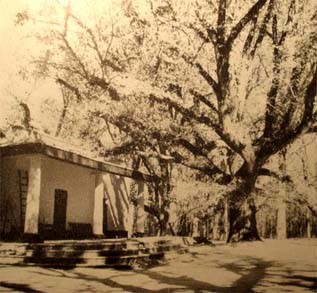 W
WClemente López de Osornio (1720–1783) was a Spanish military leader. He served during the Viceroyalty of Peru as Captain of the Regiment of Blandengues of Buenos Aires.
 W
WDon Cristóbal Martínez-Bordiú y Ortega, 10th Marquis of Villaverde, was a Spanish aristocrat, the son in law of dictator Francisco Franco, and a heart surgeon. In Spanish, his peerage is written El X Marqués de Villaverde.
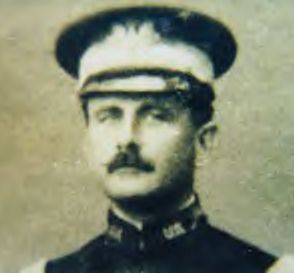 W
WLieutenant Colonel Teófilo Marxuach,, was the person who ordered the first shots fired in World War I on behalf of the United States on an armed German supply ship trying to force its way out of the San Juan Bay. Marxuach ordered hostile shots from a machine gun and a cannon located at the Santa Rosa battery of "El Morro" fort, in what is considered to be the first shots of World War I fired by the regular armed forces of the United States against any ship flying the colors of the Central Powers, forcing the Odenwald to stop and to return to port, where its supplies were confiscated.
Francisco de Meneses Brito was Royal Governor of Chile between 1664 and 1667.
 W
WJosé Ignacio de Merlos (1734–1814) was a Spanish politician and army officer, who served as Lieutenant Colonel of the Reales Ejércitos and Captain of Grenadiers in the Regimiento de Infantería de Buenos Aires. He fought against the Portuguese in the Banda Oriental and participated heroically in the defense and reconquest of Buenos Aires during the English invasions.
 W
WMiguel Antonio de Merlos (1669-c.1744) was a Spanish military man and politician, who served during the colonial period of Buenos Aires. He held various positions, including Sargento Mayor of the Compañía of Guardias Españolas and Governor of the province of Porco.
 W
WJosé María de Orbe y Gaytán de Ayala, 5th Marquess of Valde-Espina, 1st Viscount of Orbe (1848-1933) was a Spanish Carlist soldier and politician. His career climaxed during presidency of the provincial Gipuzkoan self-government in the 1910s, though he is known mostly as member of the iconic Basque Valde-Espina dynasty. In the party ranks he rose to provincial leader in Gipuzkoa and was briefly member of the national Carlist executive.
 W
WDomingo Ortiz de Rozas (1721–1785) was a Spanish nobleman, who served in the Royal Guards at the service of the Spanish monarchs.
 W
WPedro Osores de Ulloa was Royal Governor of Chile from November 1621 to September 1624. He replaced Cristóbal de la Cerda y Sotomayor. On his death bed Osores appointed his brother-in-law Francisco de Álava y Nureña as temporary governor in September 1624. Was a knight of the Order of Alcántara
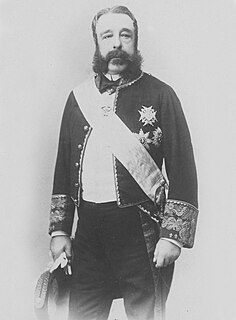 W
WJosé Osorio y Silva, 9th Duke of Sesto, 16th Duke of Alburquerque, 16th Marquess of Alcañices, was a Spanish nobleman, politician and army officer. He was also known by his title Duke of Sesto, inherited from his father, and by nicknames Pepe Osorio or Pepe Alcañices. He was head and representative of the houses of Alcañices, Alburquerque and los Balbases, causing a personal union of sixteen noble titles and four grandee titles. He is also considered one of the most notable mayors of Madrid, serving from 1857 to 1864.
 W
WAlonso Pita da Veiga, born in Ferrol in 15th century Galicia, Spain, was a Spanish military officer. He was among the commanders of the Spanish Tercios fighting under the orders of Count Fernando de Andrade in the Battle of Pavia, and in other battles of the Italian Wars between 1513 and 1525. He was granted the right to display a coat of arms, and was granted land and property in Ferrolterra, his birthplace, for having participated in the capture, on the battlefield, of the king of France, Francis I.
 W
WGiuseppe Umberto "Pino" Rauti was an Italian politician who was a leading figure on the far-right for many years, although Rauti described himself as leftist and non-fascist. Involved in active politics since 1948, he was one of founders and, for many years, the leader of the Italian Social Movement (MSI). He was the main representative of the MSI's left-wing.
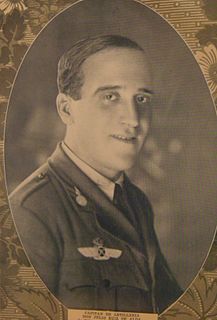 W
WJulio Ruiz de Alda Miqueleiz was a Spanish aviator and politician. He joined the Army at the age of 15 and developed an interest in planes. He was the co-pilot of the Plus Ultra as it completed a transatlantic flight in 1926. The Plus Ultra departed from Palos de la Frontera, in Huelva, Spain on January 22 and arrived in Buenos Aires, Argentina on January 26. It stopped over at Gran Canaria, Cape Verde, Pernambuco, Rio de Janeiro and Montevideo. The 10,270 km journey was completed in 59 hours and 39 minutes. In 1931 along with José Antonio Primo de Rivera he was a founding member of the Falange movement. He was shot without a trial by anarchist militia in Madrid's Cárcel Modelo prison on August 23, 1936, after the beginning of the civil war.
 W
WPascal Ruiz Huidobro
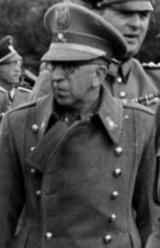 W
WAntonio Sagardía Ramos was a Spanish military officer and war criminal who fought for the Nationalist faction in the Spanish Civil War. He became known as the "Butcher of Pallars" because of the massacre committed under his command in Pallars Sobirà.
 W
WJosé de Santiago Concha y Salvatierra was a Spanish politician and Royal Governor of Chile.
 W
WRamón de Santillán González was a Spanish statesman who served as Minister of Finance and First Governor of the Bank of Spain.
 W
WMartín Jacobo Thompson (1777-1819) was an Argentine patriot, who had an active participation during the English invasions, and the Revolution of May. He is considered the founder of the Argentine Naval Prefecture.
 W
WAntonio Villavicencio y Verástegui was a statesman and soldier of New Granada, born in Quito, and educated in Spain. He served in the Battle of Trafalgar as an officer in the Spanish Navy with the rank of Second Lieutenant. He was sent as a representative of the Spanish Crown to New Granada, where his arrival was used as an excuse in Santafé de Bogotá to start a revolt; this was known as the Florero de Llorente, which culminated in the proclamation of independence from Spain. After this incident he resigned his office and joined the cause of independence. He was later captured and became the first martyr executed during the reign of terror of Pablo Morillo.
 W
WBruno Mauricio de Zabala y Gortázar (1682–1736) was a Spanish soldier and colonial administrator. He was born in the slum of Zabala in the province of Biscay. The house of his birth has been preserved to this day, and one of its walls bears two plaques commemorating his exploits in the New World.
 W
WLuis de Requeséns y Zúñiga also known as Luis de Zúñiga y Requeséns was a Spanish politician, soldier and diplomat.